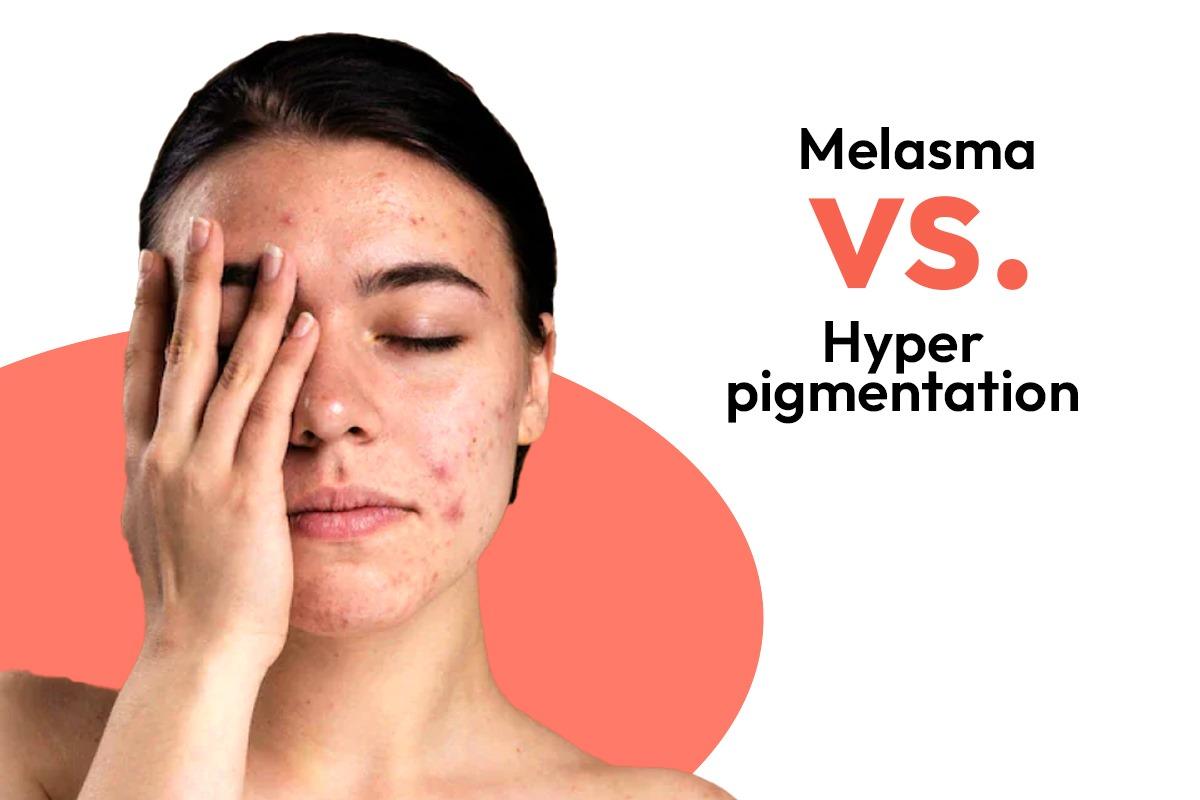
Discover Natural Beauty Tips
Melasma vs. Hyperpigmentation: What’s the Difference and What Should Your Skincare Routine Be?

You notice a few light spots on your face and immediately start experimenting with various skincare products. Using these cosmetics without fully understanding the problem can often worsen the issue rather than fixing it. This is particularly evident with common skin concerns like dark spots and melasma. While these two skin problems appear very similar, their care and treatment are quite different. Therefore, it’s essential to first understand what melasma and dark spots (hyperpigmentation) are, why they occur, and how to address them.
What is Hyperpigmentation and Why Does It Occur?
According to Dr. Jill Bickford, a renowned dermatologist at Optima Dermatology in the United States, “Hyperpigmentation is essentially the result of excess melanin production, where melanocyte cells in the skin produce more melanin than necessary.”
These types of spots are commonly seen in individuals with conditions like eczema or acne and are especially prevalent during pregnancy due to hormonal changes. For this reason, it is sometimes referred to as the “mask of pregnancy.”
How Do I Know If It’s Hyperpigmentation?
Hyperpigmentation typically appears as large, reddish or brown patches scattered across different parts of the body that are exposed to the sun, such as the face, neck, and hands. Sometimes, these can look like small freckles or sun spots.
There are two main types of hyperpigmentation:
- Post-Inflammatory Hyperpigmentation (PIH): This type of pigmentation or spot usually appears after some form of skin trauma, such as eczema or acne. To heal the acne, eczema, or other skin issues, melanocyte cells produce excess melanin, leading to the appearance of these small, dark spots on various parts of the skin. However, these spots can be improved with treatment and a proper skincare routine.
The other type is melasma, which many of us are familiar with.
- What is Melasma?
According to dermatologists, melasma is a type of hyperpigmentation that appears as symmetrical, blotchy patches of brown or grayish-brown discoloration. In simpler terms, it spreads like a net-like pattern in a concentrated area.
Why Does Melasma Occur?
Melasma can be caused by various factors. To determine our skin color, specialized cells called melanocytes in the top layer of our skin produce a pigment called melanin. This means the darker the skin tone, the higher the presence of melanin. Besides giving our skin, hair, and eyes their specific color, melanin also helps protect the skin from the sun’s harmful ultraviolet (UV) rays.
However, sometimes due to excessive melanin production, net-like patches of brown or grayish spots can appear on certain areas of the face, such as both cheeks, the forehead, and the upper lip. Some of this melanin remains within the deeper layers of our skin. This excess melanin becomes visible as spots due to prolonged, unprotected sun exposure, hormonal changes (especially during pregnancy), certain medications taken for medical treatments, or genetic predisposition. If you see a high concentration of these spots in a specific area, you can assume it is melasma. It’s also important to note that melasma rarely disappears completely with just creams or serums. Even with laser treatments, which can yield temporary results, there is a possibility of it returning. If your melasma is severe, it is crucial to consult a doctor.
So, What Ingredients Should You Use in Your Skincare Routine?
Sunscreen: No matter how much money you spend on your skincare, if you consistently skip sunscreen, none of your products will be truly effective or deliver good results. A primary reason hyperpigmentation can develop into melasma is the lack of proper sunscreen use. Unprotected exposure to the sun’s harmful UV radiation can damage even the deepest layers of your skin, increasing the risk of skin cancer. Therefore, it’s essential to apply a good SPF sunscreen 15-20 minutes before going outside, especially between 10 AM and 4 PM when the sun’s UV radiation is at its peak. And don’t forget to double cleanse after using sunscreen.
For those experiencing hyperpigmentation, incorporate effective ingredients into your skincare routine to reduce its appearance, such as:
- Chemical Ingredients: Hydroquinone, Retinol, Vitamin C, Alpha Arbutin.
- Natural Ingredients: Aloe Vera, Green Tea, Licorice, Milk Protein, Turmeric, Rice Water, Pomegranate.
For melasma, use skincare routines that include effective ingredients like:
- Chemical Ingredients: Hydroquinone (in concentrations of 2% to a maximum of 5%), Tretinoin, Vitamin C, Glycolic Acid, Tranexamic Acid, and Niacinamide.
- Natural Ingredients: Turmeric, Cucumber, Papaya, or Tomato.
A Few Things to Keep in Mind
Ingredients like retinol or hydroquinone, which are used for melasma or hyperpigmentation and contain high levels of Vitamin A, should be avoided by pregnant and breastfeeding mothers. Always consult a doctor before using any new skincare product.
We always strive to use the best products for our skin. However, we often use various cosmetics without understanding our skin type or specific problem, repeatedly ignoring how our skin adapts. As a result, we rarely see the desired outcome. The solution lies in using the right products in the correct amounts and being patient. Give your skin adequate time to heal. You will achieve a long-lasting solution only by understanding your skin’s needs and using the right cosmetics.
Take care of your beautiful skin.






